GeForce 337.88 WHQL Driver
Note that this is an archived copy of the original article. Please see here for a more detailed explanation.
Borderlands 2 is arriving in stores and launching on Steam the world over this week. Already racking up a number of high-scoring reviews, it looks to be the perfect sequel, with more guns, more laughs, and more action.
First and foremost, Borderlands 2 on the PC is a ‘proper’ release, having had its own dedicated development team from day one. Gearbox listened to fan feedback and knew for the sequel that the only way to deliver the experience PC gamers demand was to develop specific features tailored to them from scratch. And of those additions, PhysX is by far the most impressive, and interesting.
If you’re unfamiliar with PhysX, it’s a physics middleware package integrated into Unreal Engine 3 and used industry-wide to add high-quality physics simulations to games. Multi-platform developers more often than not opt for software PhysX effects powered by a system’s CPU. These provide a basic level of physical interaction, allowing characters to tumble down stairs and objects to fall from tables. Examine the effects in any great detail, however, and you would see that they are far from accurate.
For true realism, and more involved, complex, visually arresting interactions, developers like Gearbox opt for hardware-accelerated PhysX effects, powered by NVIDIA's GeForce graphics cards. Thanks to the GPU's parallel processing power, effects and interactions can be rendered with a great deal of precision in record time. On a CPU, the same calculations would take significantly longer, taking the frame rate into single digits.
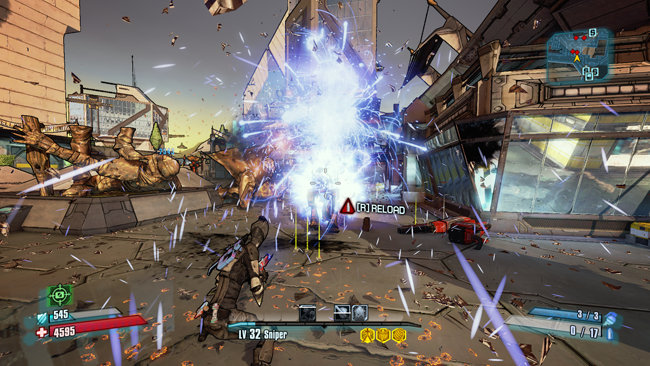
With hardware-accelerated PhysX effects enabled each scene is filled with extra detail.
Each of these effects is generated by manipulating tens of thousands of particles that persist in a realistic manner using physics calculations, ensuring they don’t clip through terrain and are affected by other forces, such as explosions. This realism is key to PhysX’s believability – if an effect clips through a wall you’re brought out of the action and reminded that it’s an illusion. This realism also gives hardware PhysX an advantage over software solutions, which use approximated effects, meaning they lack the realistic properties of PhysX’s particles. In other words, software smoke clips through walls; hardware-accelerated PhysX smoke hits the wall and realistically floats up towards the sky.
In Borderlands 2, Gearbox has leveraged PhysX’s hardware-accelerated particles and effects for four significant enhancements that are seen throughout the game. The first of these is the debris system, which kicks up chunks of terrain when the ground is shot, spews forth rocks from mining equipment, emits chunks of metal from destroyed and damaged robots, lets loose hundreds of bullet casings from certain guns, and is used in dozens of other examples.
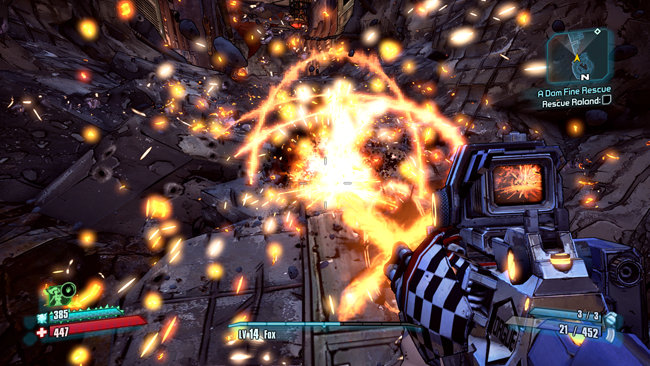
Explosive weapons that litter scenes with particles and debris ‘drop’ a few hours in to the adventure.
With CPU physics, the emitted debris would shoot across the screen before fading out of existence, or in some cases, sitting motionless on the ground, unaffected by the action occurring around it. In Borderlands 2, with hardware-accelerated PhysX effects enabled, this debris will be kicked about by further weapons fire, or from characters running through it. Pieces will land on inclines and roll towards a level surface as in real life, and should another piece be in the way the two will collide, further changing their final position. Bring enough pieces together and they’ll pile up, and with the highest level of PhysX enabled these pieces will persist until removed to make room for yet more mayhem.
At its most basic level it doesn’t sound too thrilling, but in the heat of combat debris, robotic scrap, pieces of metal, and more, will whizz across the screen, helping create a sense of excitement; of being in a real battle with ludicrously overpowered weapons that fire three rockets simultaneously and are capable of tearing Bandits limb from limb.
Adding to the spectacle is the use of our latest debris system, in which debris is self-shadowed, dynamically shadowed, and capable of casting its own shadows on terrain and other objects, increasing the image quality of the scene and the debris itself in a meaningful, realistic manner. Furthermore, debris receives the same black outline shading as the game’s other elements, helping enhance the realism of the additions within the context of Borderlands 2.
Like debris, realistic, physics-led water cannot be rendered using software physics solutions. Several games feature fantastic water that looks real, but it can never be manipulated by the player beyond a ripple or a splash, or used in a dynamic non-scripted fashion. In Borderlands 2, Gearbox has integrated PhysX’s Smoothed-Particle Hydrodynamics (SPH) fluid system, which generates interactive liquids that have customized levels of viscosity, friction, density, and ‘stiffness’.
Following its last outing in Alice: Madness Returns, powering the game’s oily goop, the SPH system has received a number of pronounced upgrades, allowing Gearbox to make extensive use of it throughout Borderlands 2. Previously, the system was limited to one type of fluid per scene; now, a near-unlimited number can be generated and shown simultaneously in real-time. The liquid itself received a makeover also, now using more than double the number of particles to create a better effect that can be manipulated to a much finer degree. On its surface, several shaders are applied to create a shiny, stylized appearance, and at the very end of the process FXAA anti-aliasing is applied to help the fluid appear naturally smooth and rounded.
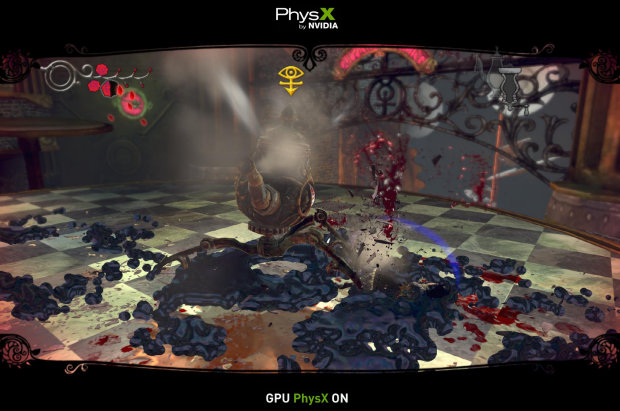
An example of SPH fluids in Alice: Madness Returns. For more on PhysX in Alice, click here.
Together, these advances allow the SPH system to generate half a dozen fluids in-game that are applied to dozens of effects. You’ll find water leaking from pipes, barrels filled with toxic sludge that persists and damages players and enemies alike, Napalm-drenched creatures, and more. But what makes the system especially great in Borderlands 2 is how Gearbox leverages it to enhance the action, opening up new options in combat.
Take the Badass Slagged Skag, for example, which spits Slag at players. In the zany world of Borderlands, this Slag coats a living being and makes it more susceptible to regular attacks. So when that Slagged Skag is spitting with PhysX enabled, dodge out of the way and draw its mindless minions through the persistent puddle, greatly increasing your chances of survival in the mean wastelands of Pandora.
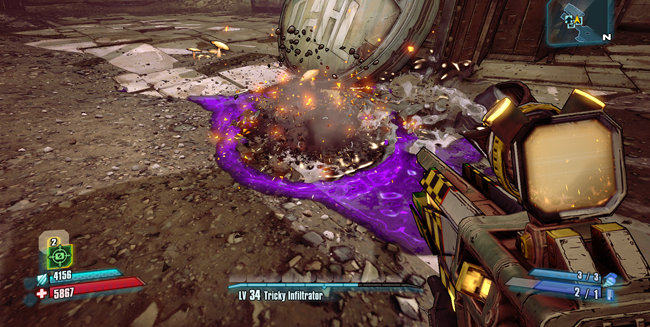
The shotgun’s blast displaces the Slag and the water the Slag is floating upon, and kicks up hundreds of pieces of debris, in addition to emitting numerous fiery particles.
A much more subtle addition to Borderlands 2 is the cloth system. Adding pieces of dynamic cloth to the world, in the form of flags, banners and tarps, the cloth system follows the same physics-led rules as the others in Borderlands 2, resulting in realistic additions that would be impossible to render using a CPU given their aforementioned limitations. Furthermore, beyond fluttering and general movement, these cloth pieces can be torn and destroyed by weapons fire, creating the sense of an aftermath to combat, with pieces of cloth strewn around the environment, and the once-attractive displays destroyed.
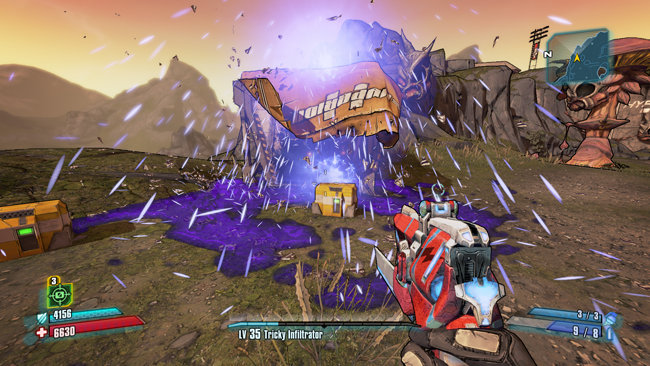
Pieces of cloth begin to break away from the main body as it reacts realistically to the tremendous forces exerted by the high-level gun.
Powering the many interactions between particles, players, weapons, cloth, and enemies, are Force Fields, which tell the PhysX effects how to interact with one another and the game’s 87 bazillion guns. For example, if an enemy stomps in a pool of Slag, a force field calculates the force of that stomp and tells the Slag to spread out in a specific manner, briefly leaving a void where the enemy’s foot fell. Each of the PhysX particles has physics-led properties to ensure realistic interaction with their surroundings by default, but with the addition of Force Fields much more realistic and unique interactions can be shown, allowing a giant enemy to interact with the Slag in a radically different, stylized way, highlighting its size, weight, power, and unique abilities.
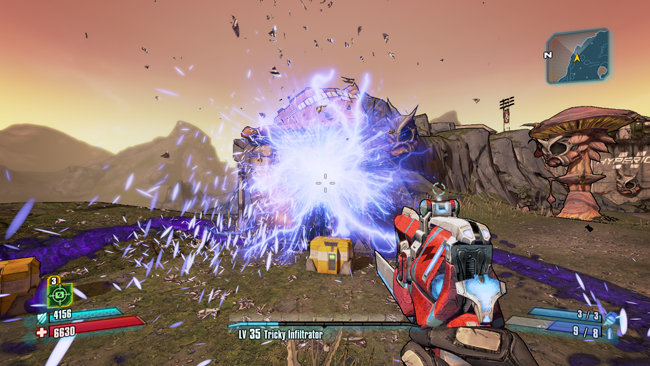
The Force Field associated with the weapon propels the Slag out from the center of the blast.
As you’re no doubt aware, Borderlands 2 is as far as from reality as one can get, unshackling Gearbox’s creativity. This creative freedom led to the development of weapons, abilities, grenades, and enemies capable of generating vortexes that draw in everyone and everything. With PhysX enabled, it was discovered that the existing Force Field technology could be adapted and enhanced to create a new effect, which draws in PhysX debris, fluid and cloth, in addition to characters, enemies, and items. Once acquired, the vortex throws them about, both vertically and horizontally, before finally exploding, launching the manipulated particles, objects and characters across the scene. It is, by far, our favorite effect, and is shown along with every other PhysX effect in our trailer, embedded below.
Combined, the PhysX effects improve the fidelity and action of the game by such a degree that you lament their absence in every other game – take a look at the interactive comparison below and you’ll see just how much PhysX adds to the already great Borderlands 2 experience.
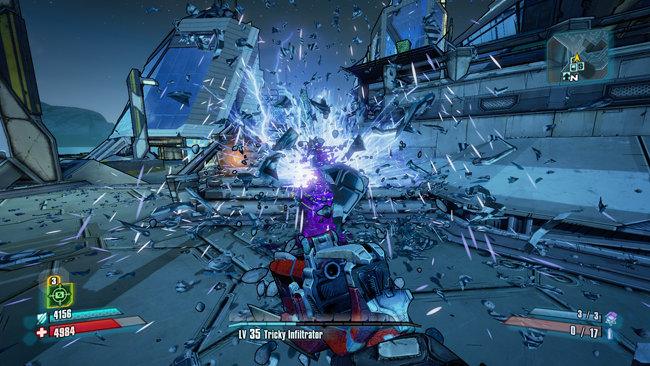
PhysX-accelerated particles and debris shower the screen when PhysX is enabled in-game (click to load an interactive comparison, highlighting PhysX Low vs. PhysX High).
Borderlands 2 PhysX Performance
Though these enhancements are made possible by advances in the PhysX software, the rendering of the improved effects is only possible following the release of our latest Kepler video cards. Previously, during the release of Alice: Madness Returns, the available hardware was far slower, limiting the number of particles that could be shown. With the GTX 600 Series now available, we can double the number of particles per effect, increase the complexity of the effects, and increase the number of effects per scene, whilst simultaneously retaining the level of fidelity seen in Alice by creating a less-demanding “Medium” PhysX Effects option.
At a bare minimum, a GeForce 8800 Series graphics card is required to enable PhysX, but realistically players will require a more recent card, such as the GTX 460. To attain the highest level of fidelity, however, Borderlands 2 players will require a GeForce GTX 660 or higher. Our performance chart below, generated using the game’s built-in benchmark, provides a general overview of how the game will perform with PhysX High enabled on a range of GPUs, but please note that the exact performance impact during gameplay will vary from scene to scene PhysX’s performance is determined solely by the number of effects on screen.
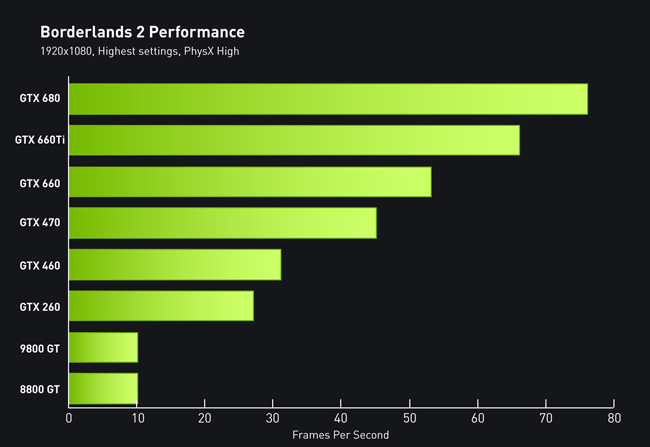
A general indication of Borderlands 2 PhysX performance.
If PhysX High is too taxing for your system, switch down to Medium. Below, we detail the effects you’ll gain and lose when switching from High, to Medium, to Low.
| PhysX Low | PhysX Medium | PhysX High | |
|---|---|---|---|
| Debris | No GPU PhysX effects shown. | Debris particle-count reduced, resulting in fewer pieces of debris per effect. | Max-quality Debris. |
| SPH Fluid | No GPU PhysX effects shown. | SPH Fluid particle-count reduced, fluid effects no longer on or emitted by four enemy types, and SPH water removed from all scenes. | Max-quality SPH Fluid, full range of enemy fluid effects, numerous uses of SPH water. |
| Cloth | No GPU PhysX effects shown. | Lower-quality cloth and fewer instances of cloth per level. | Max-quality cloth. |
| Particles | No GPU PhysX effects shown. | Fewer general particle effects, e.g. sparks and embers. | Sparks, embers, and more, shower each scene. |
These PhysX effects have taken considerable time and effort to implement, even with the accelerated development process enabled by the PhysX SDK, and though they only benefit NVIDIA GPU users, the other features that Gearbox have taken great care to implement benefit all PC gamers. For more on those check back soon for our Borderlands 2 Tweak Guide, which will examine each feature in-depth, show the performance impact of each setting in the game, and allow you to get the absolute most from Borderlands 2 and your system.
In the meantime, kick back and enjoy Borderlands 2, one of the year’s best and most enjoyable games, filled to the brim with content that will keep you playing for weeks to come.
 Previous
Previous
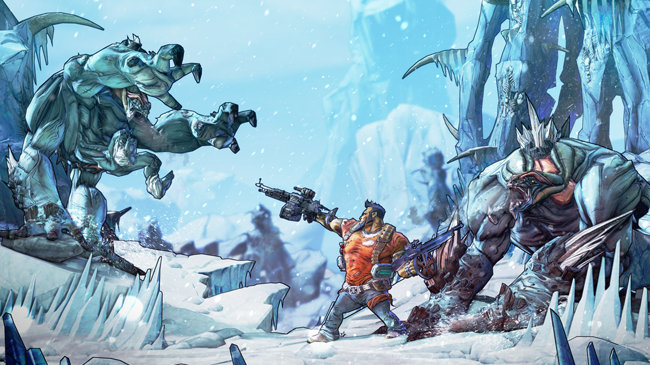
Comments
This comment section is currently disabled. Click here to enable comments and load all Disqus related resources
Please note that by enabling and loading these Disqus resources, you are agreeing to allow everything that comes with a Disqus comment section, including their cookies and all scripting.
This comment section is currently enabled. Click here to disable comments and unload all Disqus related resources
Please note that I have absolutely zero control over this comment section. It is still administered entirely by Nvidia themselves. I have no moderation power whatsoever and don't necessarily endorse any of the comments posted here. In fact, I don't believe this comment section adds much value to the article to begin with but included it only because it existed on the original.